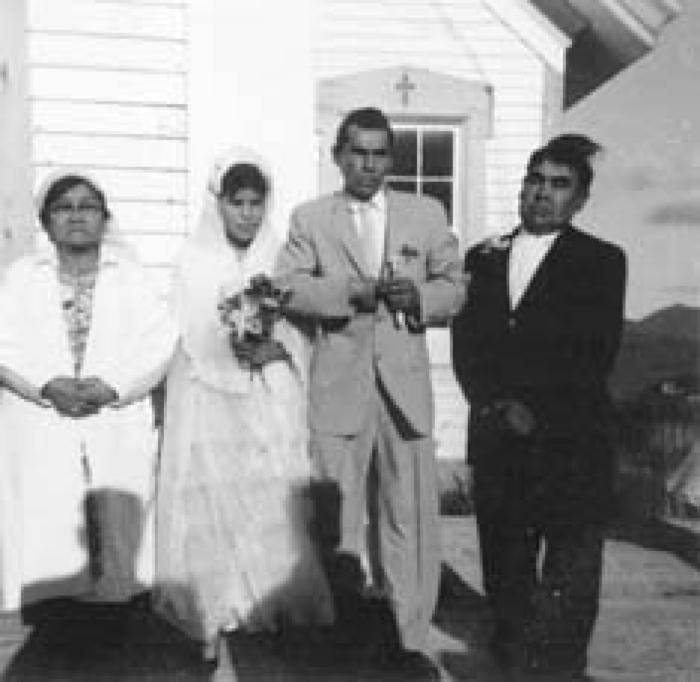Married — Kasuulluni

In classical Alutiiq society, preparation for marriage began at puberty. At the onset of her menstrual period, a girl was secluded in special hut for at least ten days. Menstrual blood was considered so extremely offensive to animals that great care was taken to avoid contamination. This prevented her new, powerful life-giving abilities from diminishing the hunting luck of her father and brothers. This ritual separation also marked a young woman’s transition into adulthood. When she emerged from seclusion, her chin was tattooed with fine black lines to signal her readiness for marriage. At festivals, she could now wear long beaded headdresses to attract suitors.
Marriages were either arranged or formed by mutual consent. A couple might approach their parents for permission to marry, or parents might plan their children’s engagement. Marriages were formalized with valuable gifts. Prospective in-laws exchanged items to symbolize their acceptance of a union. With the gifts bestowed, the groom went to live with his bride, working to assist her family. There was no formal ceremony at the time of marriage, although some unions were recognized later with celebrations at winter festivals. After marriage, a woman might add tattoos to her body or hands as a sign of love for her husband.
Everyone married, from shamans to slaves. Marriages were usually monogamous: one man married one woman. However, polygyny—marriage to multiple spouses—did occur. Wealthy women would sometimes marry a second husband to assist with household chores. Similarly, men could have two or more wives. Chiefs and shamans, in particular, were known to have multiple spouses.
Divorce was possible, but not common. When a couple decided to split, the man simply moved out of the house. Any children remained with their mother, and both parents were free to remarry immediately without social stigma. In the historic era, as Alutiiq people adopted the Russian Orthodox faith, they began to practice Christian marriage customs.
